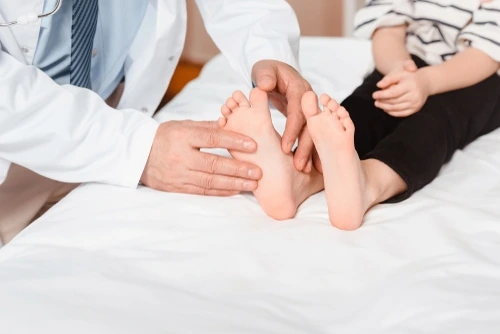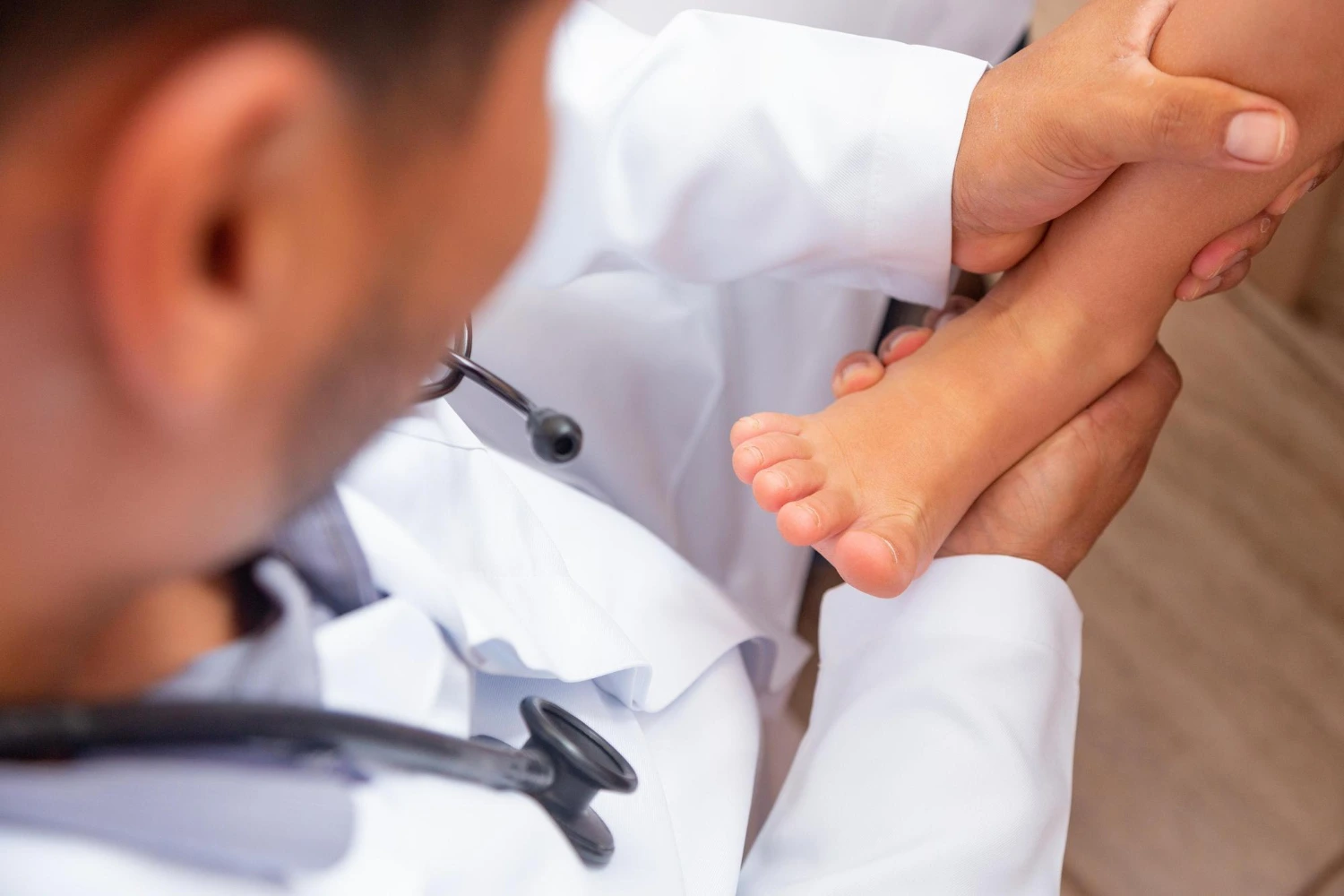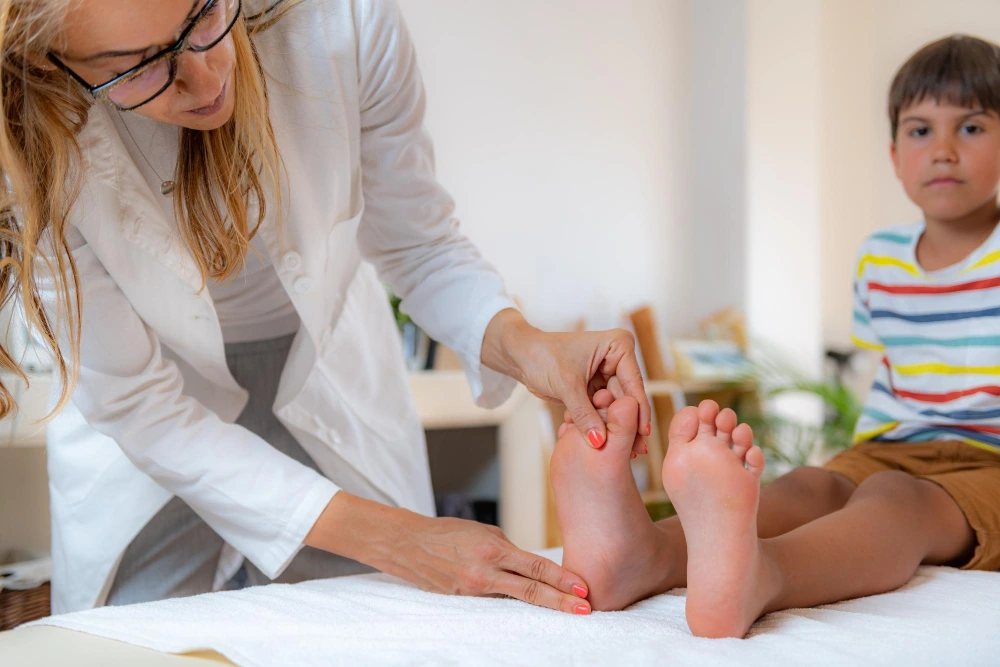
Pediatric Foot Care
Pediatric Foot Care
Book Your Visit Now
Pediatric foot care is vital for your child’s growth, especially for proper treatment of malformations or injuries.Children often experience unique conditions that only a highly trained specialist may be qualified to properly evaluate, but at Anderson Podiatry Center, we are certified and equipped to tend to your child’s podiatric needs.
In many cases, pediatricians are good at evaluating and assessing, in infancy, very severe foot and ankle problems such as clubfoot, or severe malalignment in the feet. However, as time goes on, when the child starts to walk or become more active, other issues that have to do with foot type arise. The most common pediatric foot conditions we see are as follows.
Book Your Visit Now
Intoeing
As a child starts to walk more, an intoeing gait may be noticed. This is when a child walks or runs with their feet turn inward instead of pointing ahead. Intoeing can have different causes, and it’s important to understand the specifics for each child. In some cases, the child may grow out of it, and in others, treatment may be necessary (these treatments are usually conservative in nature.)

Pediatric Flat Feet
Flatfeet are important to properly evaluate. In the majority of cases, conservative measures such as custom made orthotics may be recommended. However, when the flatfoot is severe, correction of the foot may be recommended to avoid more severe problems (when feet or too flat, knee hip and back pain can eventually occur.)

Toe walking
Toe walking is a very common issue. Children that walk on their toes have a happy gait where they appear to be bounding as they walk, with their heels barely making contact with the ground. In most cases, the child may grow out of this, but conservative measures can also correct this problem. Please consider an evaluation for this as you may be relieved to know what, if any treatments, are necessary.

Don’t assume your child will just “grow out” of foot problems.
For a parent, watching a child struggle with pain or difficulty walking can be scary and confusing. Parents are often told that the child “will grow out of it,” but aren’t really given a timeframe or any direction on how to help along the process. While it is true that some pediatric foot issues resolve with time, it is more often the case that preventative and supportive treatments started early will give the child the best chance of healthy and normal development.
Pediatric foot and ankle issues can be separated into two basic categories depending on the onset of the problem. There are issues that the child is born with and issues that can develop over time. Routine screenings done by pediatricians soon after birth catch the majority of the issues present at birth. Problems that develop more slowly can be more difficult to catch, and are often first noticed by the parents when the child begins walking.
The highly-trained podiatrists at Anderson Podiatry Center can identify problems affecting your child’s hips, knees, ankles, and feet. We check for any limited or excessive motion, pain, weakness, or misalignment and determine severity and a course of treatment by involving you and your child in the diagnostic process.
We can treat most childhood foot and ankle issues with exercise or therapy to strengthen weak muscles, loosen tight joints, or correct imbalances.

Comprehensive Solutions
For those issues that do not respond to exercise and therapy alone, we typically recommend:
• Orthotics/Braces
• Limiting types of shoes
• In very few cases: surgery
We are able to fit your child for most orthotics devices in our office and monitor their development as they grow and progress.
Don’t wait another day hoping your child’s issue will resolve on its own.
• We involve the entire family as well as your child in the diagnostic process to ease fears and reduce anxiety
• Long-lasting relief is our goal
• We treat the underlying cause of issues, not just the symptoms
• Most insurance plans accepted




